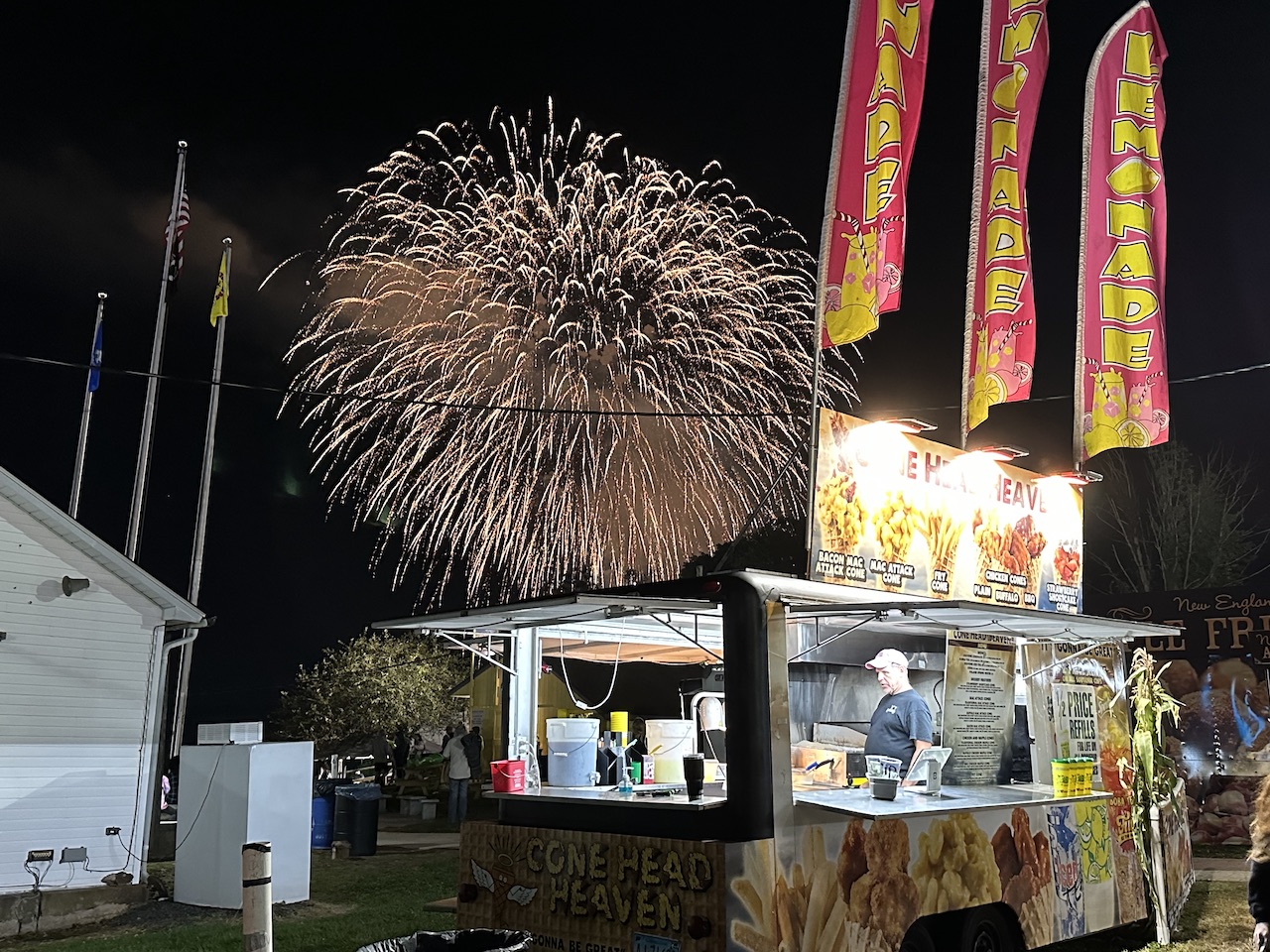
1916: You might know it as the year Woodrow Wilson was re-elected, the year the first Planned Parenthood clinic opened, or the year Dadaism made its mark on the art world. But to the residents of Middlesex County, it was the first-ever Durham Fair. What began as a humble agricultural exposition with a crowd of 2,000 became the largest fair in Connecticut, with almost 200,000 attendees gathering in recent years. Attracted to the art of the spectacle, I convinced my friends it was paramount to go. Kindly, they indulged me, equally enticed by the promise of candied apples and questionably assembled roller coasters.
We pulled into a massive field that smelled of damaged grass and overturned mud. Unsure of whether to proceed, my friend handed a five dollar bill to the parking attendant and inched her baby blue bug past the flimsy gate. A row of Durham residents in neon vests used air traffic controller batons to wave us into our designated parking spot. Skeptical and disoriented, looking for planes overhead, I tried to assuage my worries and trust the process. Where was the fabled Durham Fair? I began to panic, thinking my dreams of sensationalized Americana were all but a fallacy. Sensing my worries, one of the parking assistants motioned us to the yellow school buses at the front of the lot.
Boarding the bus was like an EKG for the psyche. I felt my seventh grade self come alive as I patiently awaited Ms. Kringle to rev the engine and catapult me into a world of gaudy attractions and glorified gluttony. And suddenly it was there, right before my eyes. Over the hill and around the bend, the light of an average-sized Ferris wheel caught my eye.
Stepping into the fair, I was immediately greeted by the smell of bacon-wrapped turkey legs that attacked my olfactory from every corner (aside from inside the barns, where cow manure trumped it). Occasionally, I would spot a culprit, a middle-aged man towing five toddlers, presumably gorging on protein to keep his energy levels high. My grub of choice was an impossibly plush round of fried dough. The ghostly heat of the oil vat radiated through time and space to reach my cold hand, the powdered sugar lodging itself in my throat while clouds of white encircled my wheezing face.
Fueled and ready to rumble, I made my way toward the real event of the night: the demolition derby. I didn’t know what was happening at first, and I was too far away to realize the smoke above was the soul of a smoldering Toyota Corolla ascending to car heaven. What an enrapturing New Age ritual! Pure and simple destruction, the joy of creating carnage. The joy of knowing there is no shortage of Toyota Corollas in the world. The joy of human evolution, sacrificing goats for gods now cars for corporate greed.
Zigzagging between T-Mobile booths and artisanal fudge stalls, I marveled at the fruits of late-stage capitalism: three french fry stalls lined up beside one another, an army recruitment tent that offered “100% free college tuition.” Hungry from an accumulating unease, I walked from food stall to food stall, trying to find a fried Oreo that cost less than eight dollars a piece.
The final stop of the night was the petting zoo. The cherry on an ethically dubious cake. We walked around the pens and cages, looking at perfectly bred bunnies with names like “Mad Hatter” and “Mr. Cuteness.” The Durham County Fair truly had all their ducks in a row. “No,” a friend said, “these are some of the best waterfowl I’ve ever seen.” The piglets were small and the pumpkins were large. I wondered how many secondhand GMOs would be contracted after such prolonged exposure.
After a spin on the Ferris wheel and a brief flirtation with some fall-themed house goods, my friends and I decided that our senses had been adequately stimulated. We couldn’t stand to see one more sheep, ride one more teacup, or eat a gram more of sugar. Boarding the yellow school bus, we drove back around the bend and over the hill, knowing that despite some reservations, next year we would be going back down this rabbit hole again.
Gemmarosa Ryan can be reached at gryan@wesleyan.edu.


Leave a Reply